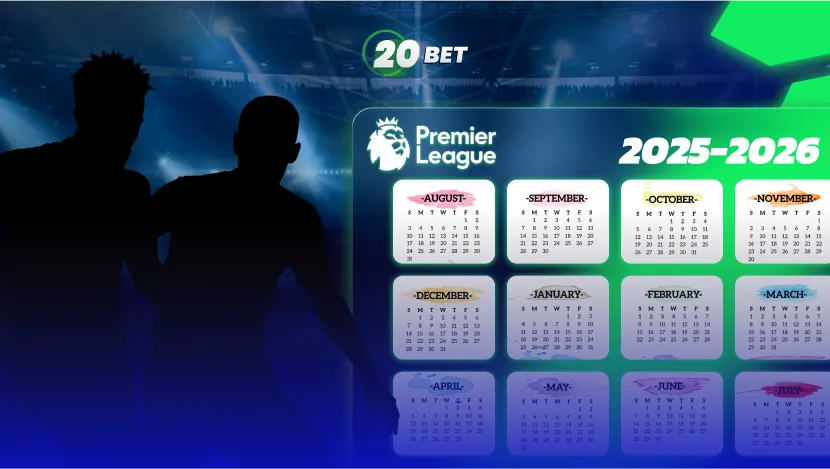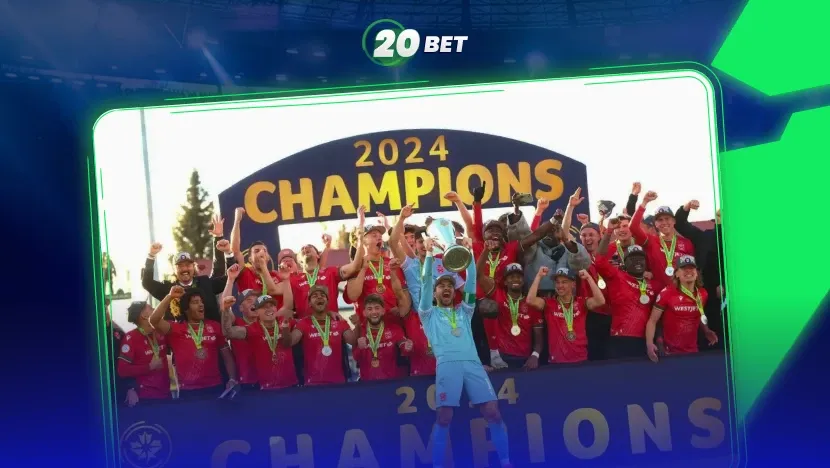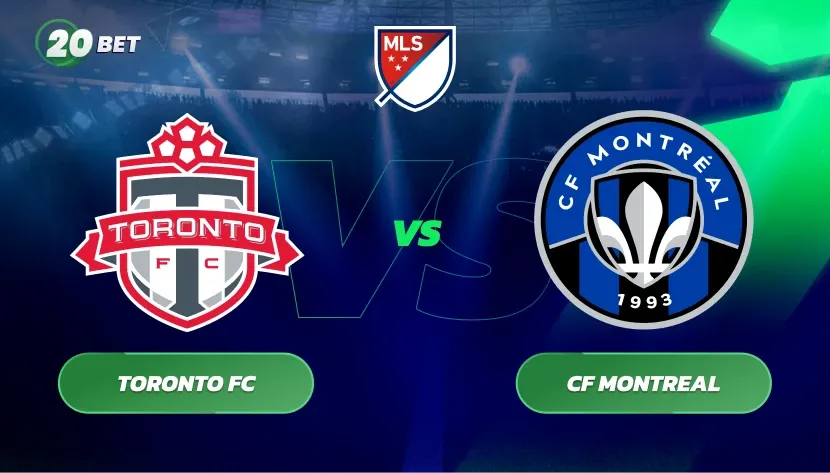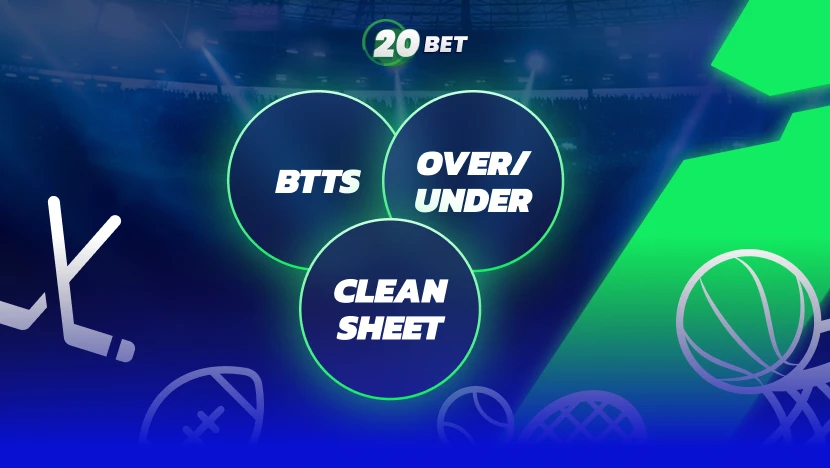Here’s a clean Premier League preview for 2025–26. We cover rule tweaks, major transfers, promoted sides, title contenders, relegation risk, and the markets that matter — from outrights to player props — plus data angles for sharper predictions grounded in fixtures, lineups, and form.
Overview of the Premier League 2025-2026 Season
The 2025–26 Premier League season features 20 clubs, each playing 38 games from August 2025 to May 2026, with the final round on May 24, 2026. Newly promoted sides include Leeds United, Burnley, and Sunderland, while Leicester, Ipswich, and Southampton were relegated last season.
Early weeks have already produced tight matches and late drama — for example, Arsenal’s 1–1 draw with Manchester City at the Emirates, where Gabriel Martinelli equalized in the 93rd minute after an Erling Haaland opener, and a goalless match between Bournemouth and Newcastle that posted one of the lowest xG totals of the season.
Expect fixture congestion around Europe to force rotation and test stamina, with outcome swings tied to short streak runs.
Key Rule Changes and New Regulations
A new “captains-only” communication rule with referees is in place this season. You’ll see fewer huddles, faster restarts, and steadier momentum — useful for live markets tied to game tempo. These tweaks sit alongside IFAB updates highlighted by the league.
Major Transfers and Squad Overhauls
One of the summer’s most notable transfers was Arsenal’s signing of Viktor Gyökeres, finally a true No. 9 for their box presence and set-piece threat.
Liverpool drove the summer narrative: a British-record $170 million move for Alexander Isak headlined a record club outlay of around $598 million, while Florian Wirtz arrived for $134.4 million with add-ons potentially taking the fee to roughly $155.9 million. Those two reshape the team’s balance between attack and creativity and explain why projection models bumped the Reds’ ceiling despite significant turnover.
Tottenham poached Mohammed Kudus from West Ham for about $74.7 million, adding a direct ball-carrier and finisher who can play across the front three
Newly Promoted Teams to Watch
- Sunderland have arrived with energy and results to match, as evidenced by their 1–1 draw at Villa Park, where Wilson Isidor equalized despite the team being reduced to 10 men.
- Leeds bring pressing and a wide threat.
- Burnley have added experience to stabilize transitions.
Title Contenders and Top-Four Race
Most model-based previews list Arsenal, Liverpool, and Manchester City as Premier League title contenders. Arsenal’s late comeback against City underlined their consistency and mentality, even when chasing a result. That’s your benchmark when pricing long outrights and Premier League top-four odds.
Favorites for the Championship
Opta’s supercomputer lifted Arsenal’s title probability this summer after adding a No. 9. Liverpool’s pressing and depth keep them in contention, while City continue to rate highly for efficiency. In such close title races, small edges — set-piece output, keeper form, and schedule clumps — often prove decisive. Keep an eye on injury news for Premier League players around winter congestion.
Clubs Battling for Champions League Spots
Chelsea and Aston Villa entered the season as bubble teams in many EPL predictions. Newcastle’s prospects depend on how they manage European fixtures and travel — the rotated XI in their 0–0 draw at Bournemouth showed the cost of heavy weeks. United’s push hinges on a stable midfield and a reliable No. 9. Derby swings and short winning streak bursts often flip these slots.
Mid-Table Battles and Dark Horses
Mid-table is a marathon, not a headline. The teams that bank points here usually keep a stable spine and rotate with a plan, not panic. Think Brighton’s automatisms, West Ham’s set-piece punch, and Tottenham’s tactical tweaks: each can tilt a matchup without fanfare.
Week to week, the edge often isn’t a star turn but a small adjustment — an extra runner from midfield, a fullback tucked inside, a pressing trigger moved five yards higher — that turns tight games into quiet, steady returns.
Teams That Could Surprise
A structured Chelsea or a settled Villa could surge if they convert chance creation into consistent goals. Promoted sides with early momentum — like Sunderland — can park themselves 11th–13th before variance and schedule heat up. These are classic Premier League underdogs: compact shape, quick outlet, and discipline in transition.
Potential Breakout Players
Look for wide forwards stepping into 2,500+ minutes and full-backs with high crossing volume in teams that dominate territory. Also track players from promoted clubs who successfully translate Championship form — Sunderland’s Wilson Isidor has already shown his impact in the opening weeks.
EPL players to watch this season:
- Wilson Isidor (Sunderland): scored the equalizer away to Aston Villa with his team down to 10 men, a sharp sign that his off-the-shoulder runs and composure translate well at this level.
- Jaidon Anthony (Burnley): has already netted four league goals, including a key equalizer against Forest. His volume shooting in a direct system points to a sustained end-product.
- Viktor Gyökeres (Arsenal): immediate scoring impact for a side that flood the box. With strong service and consistent minutes, he could emerge as a leading scorer.
- Micky van de Ven (Tottenham): elite recovery pace (fastest top speed last season) keeps Spurs’ high line viable. If he stays fit, expect spikes in defensive metrics and clean-sheet probability.
These profiles fit the same betting angle: stable minutes, a defined role in the formation, and evidence in early fixtures that the tactic suits their strengths.
Relegation Candidates
Relegation talk usually starts with the new arrivals, but early returns matter more than labels. Pre-season chatter had Burnley and Leeds on watch, yet Villa’s slow start and Sunderland’s stubborn points show how quickly the picture can flip.
Clubs Facing the Biggest Challenges
Teams with thin midfields or poor shot-stopping tend to concede repeatable chances. If a side keep allowing goals from corners and broken counters, that’s a structural problem — not just bad luck — and a signal for your prediction on totals and both-teams-to-score markets.
For example, Manchester United’s rough winter spell in 2023–24 showed how a missing ball-winner combined with center-back injuries can snowball: they were repeatedly hit on set pieces and fast breaks, and BTTS/overs landed often in that stretch.
Factors That Could Decide the Drop
Streak timing, targeted January loans, and six-pointers against direct rivals tend to decide it. A single late upset can grab headlines, but consistency against your survival cohort moves the standings more.
For example, in 2022–23, Everton stayed up not just because of the shock 5–1 win at Brighton, but by grinding out points in back-to-back six-pointers — drawing against Wolves and then beating Bournemouth 1–0 on the final day.
Betting Markets and Odds for 2025-2026
Use markets that match formation, tactics, and rotation realities — don’t price on reputation alone. Track schedule clusters, injuries, and travel before you bet, as prices often lag those updates. If team news is uncertain, prefer props (shots, tackles, saves) or live angles once lineups and kickoff tempo are clear.
Outright Winner and Top-Four Bets
Outright markets reward season-long efficiency. Consider small early positions and reassess during international breaks. For instance, if an Arsenal or Liverpool forward hits a hot finishing streak while a rival loses a starting center-back, it can present a valuable opportunity to expand title or top-four exposure at improved odds.
Golden Boot and Player Performance Markets
As of Matchweek 7, Erling Haaland leads the scoring charts with nine goals in seven league matches and just picked up September’s Player of the Month. That combination of volume, minutes, and penalties keeps him the benchmark when you’re pricing top-scorer and goal props.
For player markets, follow role and service, not reputation. Penalty takers and high-volume shooters in chance-rich systems tend to outpace odds over time, while creators in dominant sides often clear goals+assists lines even when finishing luck runs cold.
Specials, Props, and Long-Term Wagers
Manager specials and points totals carry higher variance. Use schedule pockets — e.g., a three-game run against low-press sides — to angle team totals or clean sheets. Corners and cards can be mispriced if you model pressure and territory correctly.
Key Stats and Data Trends to Consider
Metrics that measure chance quality translate best across different fixtures, helping turn predictions into better pricing decisions. Track rolling xG differential, set-piece xG, and shot location data, then compare them to recent opponent profiles. Add contextual metrics such as tempo indicators (PPDA, high turnovers) to identify tactical mismatches before the odds adjust.
Expected Goals and Advanced Metrics
xG and set-piece xG explain most medium-term swings. Opta projections offer a valuable second opinion — compare their probabilities to your price and look for gaps. The Bournemouth–Newcastle 0–0 draw is a clean example of how low-event games cap totals upside
Home vs Away Performance Patterns
Travel demands and midweek European fixtures can drain legs. Some teams actually look bolder on the road because there’s more space to run into, while others lose their compact shape and give up bigger chances. When a high line meets elite pace from the fastest players in the EPL, expect volatility on behind-the-line runs and live totals.
For example, Tottenham’s high line at St James’ Park last season was repeatedly broken by Alexander Isak and Anthony Gordon in wide channels. The game tilted early, shots piled up, and live totals moved fast — classic away-day risk amplified by pace.
Impact of New Managers and Tactics
System shifts, such as moving from a back three to a back four, new pressing triggers, or a true No. 9 can reshape shot maps within weeks. Arsenal’s Gyökeres is a live example of how one addition can redefine attacking dynamics. Always check Premier League predicted lineups on matchday, as late scratches can significantly alter formations and strategy.
Responsible Gambling
Keep betting fun and under control — treat it like paid entertainment, not income:
- Set a firm budget and a session time limit before kickoff, and don’t extend either mid-match.
- Use tools: deposit limits, loss limits, reality checks, and time-outs — turn them on now, not later.
- Keep unit size small (e.g., 1–2% of bankroll) and fixed — no doubling after losses.
- Separate tilt from staking: if emotions rise after a bad beat, pause for 24 hours.
- Log every bet (stake, odds, reason, outcome) to spot patterns and tighten strategy.
- If betting stops being fun or you feel pressure, step away and seek professional help.
Stay disciplined, review your log weekly, and take regular breaks — long seasons reward calm decisions.
FAQ
Which Premier League teams are the favorites for the 2025-2026 season?









